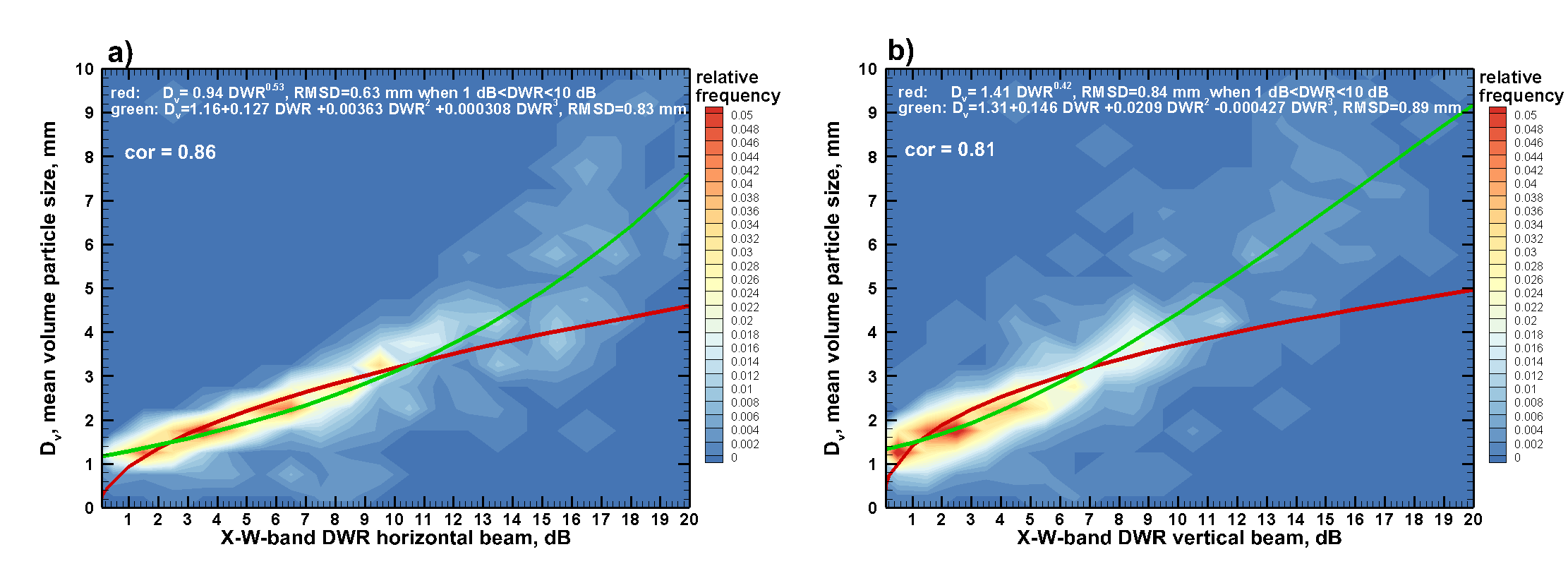Sizing ice hydrometeors using the dual-wavelength radar ratio
Submitter
Matrosov, Sergey — University of Colorado
Area of research
Cloud Processes
Journal Reference
Science
The ice cloud feedback in weather and climate models is strongly affected by the size of cloud particles. The snowflake size information is also important for improving the accuracy of weather radar-based snowfall quantitative precipitation estimation (QPE) techniques. Measurements of dual-wavelength radar ratio (DWR, i.e., the ratio of radar reflectivities at two different frequencies) provide an opportunity for robust estimations of the characteristic size of ice hydrometeor populations. Based on closely coincident microphysical and radar measurements, this study develops and analyzes statistical relations between the ice hydrometeor size and DWR.
Impact
The DWR–hydrometeor size relations developed in this study can be used for sizing ice hydrometeors at different research facilities that have dual-wavelength radar measurements. Such facilities are deployed at different U.S. Department of Energy Atmospheric Radiation Measurement (ARM) sites as well as various research aircraft equipped with airborne radars. Hydrometer size information will enhance the utility of scientific products for climate studies and other applications.
Summary
Dual-wavelength (3.2 and 0.32 cm, i.e., X- and W- radar bands) radar ratio (DWR) measurements in ice clouds and precipitation using Canada’s National Research Council Institute for Aerospace Research airborne radar are compared to closely collocated particle microphysical in situ sampling data in order to develop relationships between DWR and characteristic hydrometeor size. This study uses the data sets collected during the In-Cloud Icing and Large-drop Experiment (ICICLE) campaign. A horizontal radar beam DWR–mean volume particle size relation, Dv, provides robust estimates of this characteristic size for populations of particles with different shapes/habits. Uncertainties of Dv retrievals using DWR are around 0.6 mm when Dv is greater than approximately 1 mm. Size estimates using vertical radar beam DWRs have larger uncertainties due to smaller dual-wavelength signals and stronger influences of hydrometeor habits and orientations at this geometry of beam pointing. Mean relations among different characteristic sizes, which describe the entire particle size distribution (PSD), such as Dv, and other characteristic sizes used in various applications (e.g., the mean, effective, and median sizes) are derived, so the results of this study can be used for estimating different PSD characteristic sizes.


